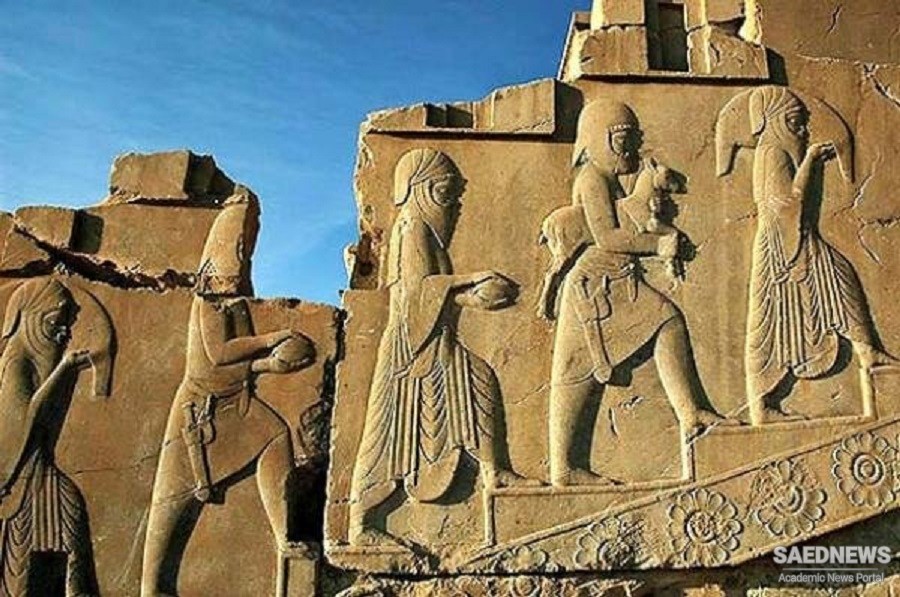None of this can seriously be maintained at present. The large collection of ostraca with Parthian texts excavated from the Arsacids’ first capital, Nisa, has removed any doubts about the fact that the Arsacids were Zoroastrians: The use of the Zoroastrian calendar in these documents and incidental references to priests offer strong supportive evidence for this claim (Bader 1996). This fact is corroborated in all other Parthian documents that have come to light in the 20th century. Two further facts, whose impor�tance has not been sufficiently realized, have become clear, moreover: the first is that the Parthians did not use their religion as an instrument of governance. The second, closely related, fact is their reliance on spreading Parthian culture (including religion as practiced in a family context) by setting an example to be emulated all the way down through the (extensive) network of families and officials that built the core of the empire (Boyce and de Jong forthcoming).
This was already hinted at above: Parthian Zoroastrianism, as far as we can grasp it, lived in the context of family life, with the royal family maintaining it in an appropri�ately lavish way. That this is a likely model emerges mostly from the fact that we can see it being copied in the western parts of the Parthian Empire, especially in Armenia (Russell 1987), which was ruled by a junior branch of the Arsacid family. There, as else�where, wealthy families employed priests and minstrels (gōsāns) to take care of their religious needs and of the task of remembering and eulogizing past successes and current endeavors. Much effort was thus spent in promoting the interest of the families themselves, and this included the construction (and maintenance) of funerary struc�tures as well as the sponsoring of temples. These temples were not (only) the fire‐temples one would generally expect, but they included temples dedicated to gods and goddesses other than Ahura Mazdā. It seems that princes and kings acted as wardens, or even priests, in some of these temples, while patronizing others by sending gifts to them. Such activities used to be seen as indicators of the fact that the Parthians were no real Zoroastrians, but this can only be maintained if one works with a strictly defined notion of what Zoroastrianism is. This reconstructed Zoroastrianism, it will be shown, is a Sasanian invention – and therefore of little use for the interpretation of pre‐Sasanian varieties of the religion. The time has come to liberate the Parthians from this yoke, and restore to them a place in the long and checkered history of the Zoroastrian religion.
One crucial contribution to Zoroastrian culture has generally been ascribed to the Parthians, and with reason. This is their role in the preservation, development, and spread of the epic traditions of the Iranians. These can be seen, of course, as belonging to the history of Iranian literature, but this would force modern Western distinctions on a non‐modern non‐Western context. It is clear that narrative traditions were the domain of the gōsāns and not of priests, but in developing them, it can be shown that the gōsāns made use of traditions and names from the Avesta. This gives us virtually the only evidence for the use of the Avesta in a non‐ritual context and this evidence is con�siderable: Wherever the Parthians settled, as administrators or in estates, evidence for Iranian epic conventions pops up.
This has generally been recognized for Armenia and Georgia, but it is equally true of the Syro‐Mesopotamian world, where pieces of litera�ture filled with Parthian conventions have been found in the works of Josephus, the Babyloniaca of Iamblichus, the Acts of Thomas (and the Hymn of the Pearl contained in it), Manichaean and Mandaean texts, and, further afield, in the development of mean�ingful stories for several experimental forms of Christianity (e.g., the Paraphrase of Seem̄ found in the Nag Hammadi codices). While this evidence does not allow us to trace the history of Zoroastrianism, it strongly supports the notion that Parthian culture spread through the network of Parthian families in their estates and cities, in a process of cultural radiance (de Jong 2013a). There is a whole world to discover here, but since this chapter is devoted to religion and politics, we have to move on to the dynasty that destroyed the Parthian Empire and, as we shall see, immediately set out to reconnect the link between Zoroastrianism and imperial politics.


 The Origin of Achaemenid Court Rituals
The Origin of Achaemenid Court Rituals














































